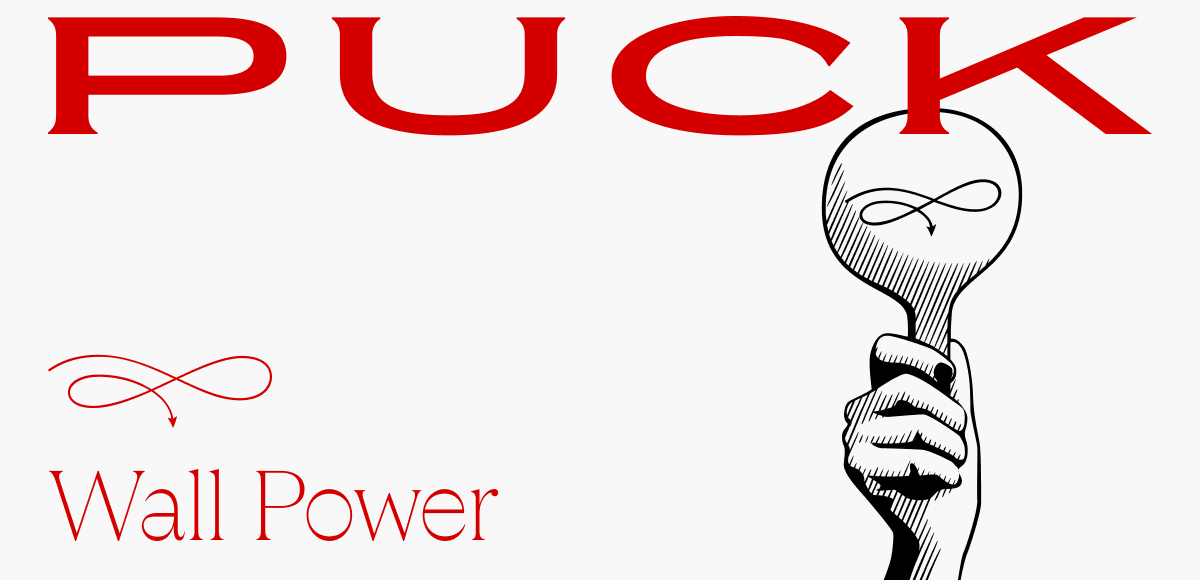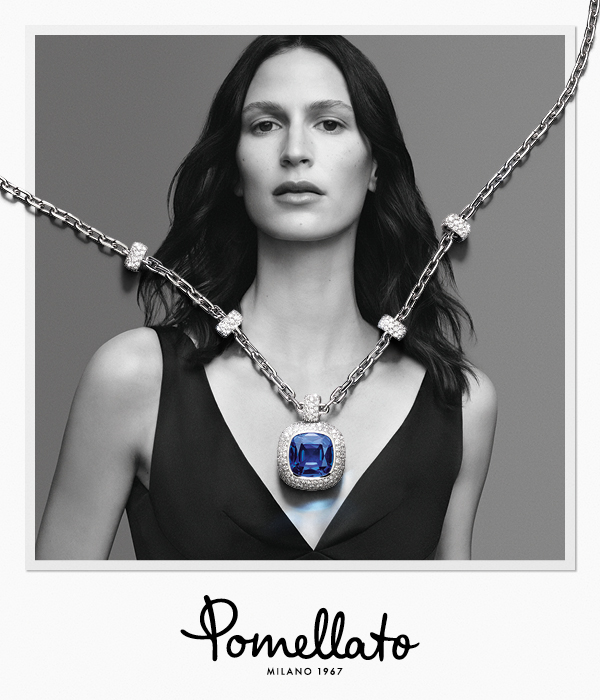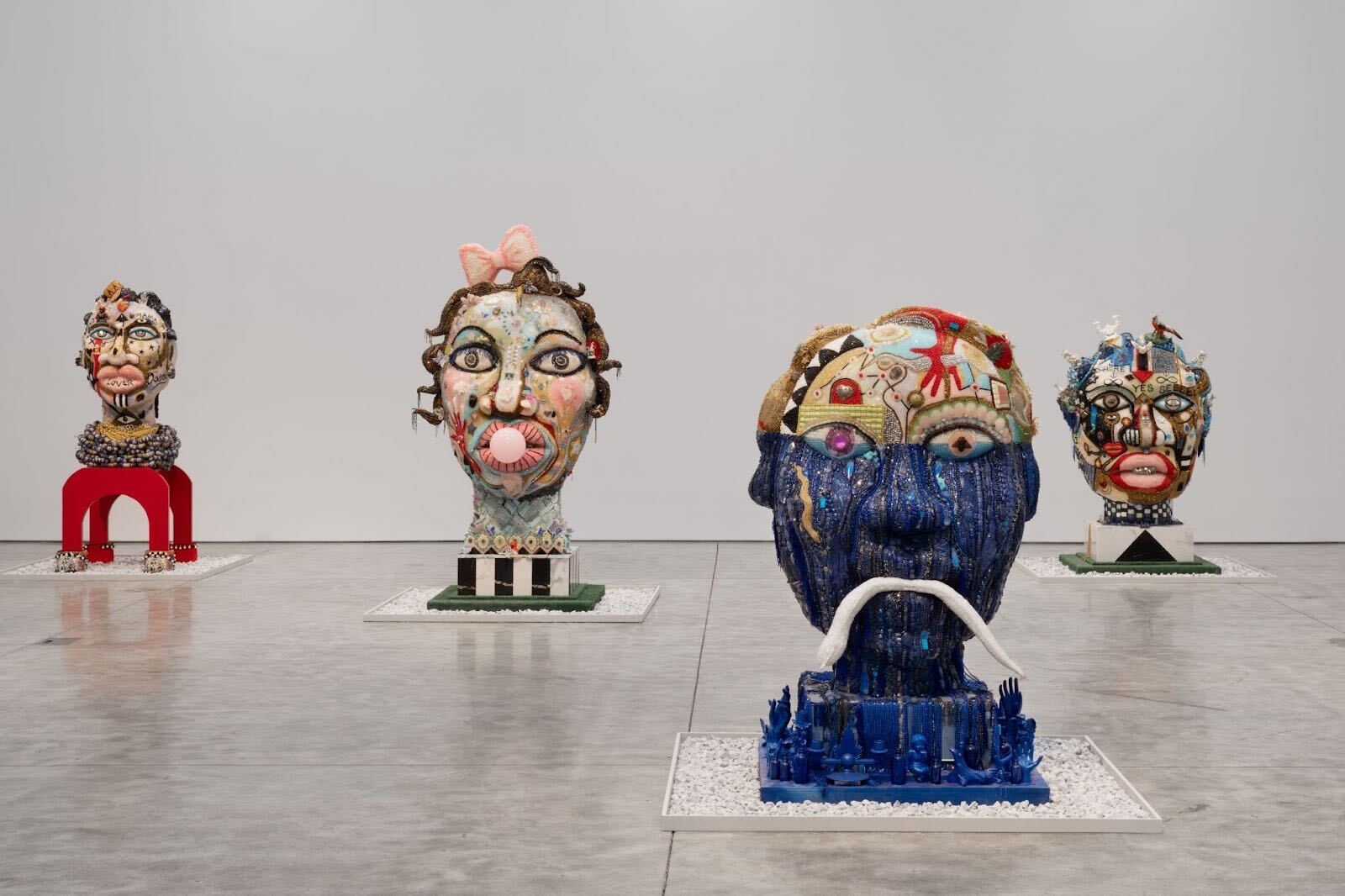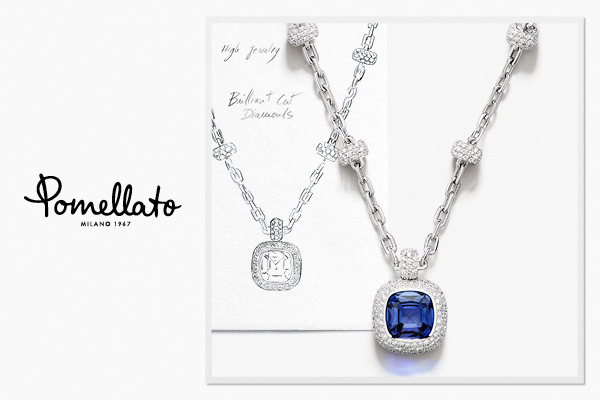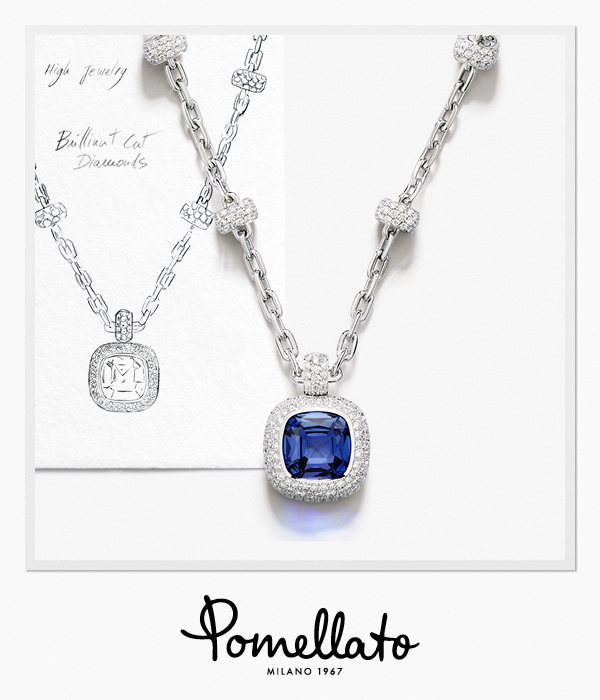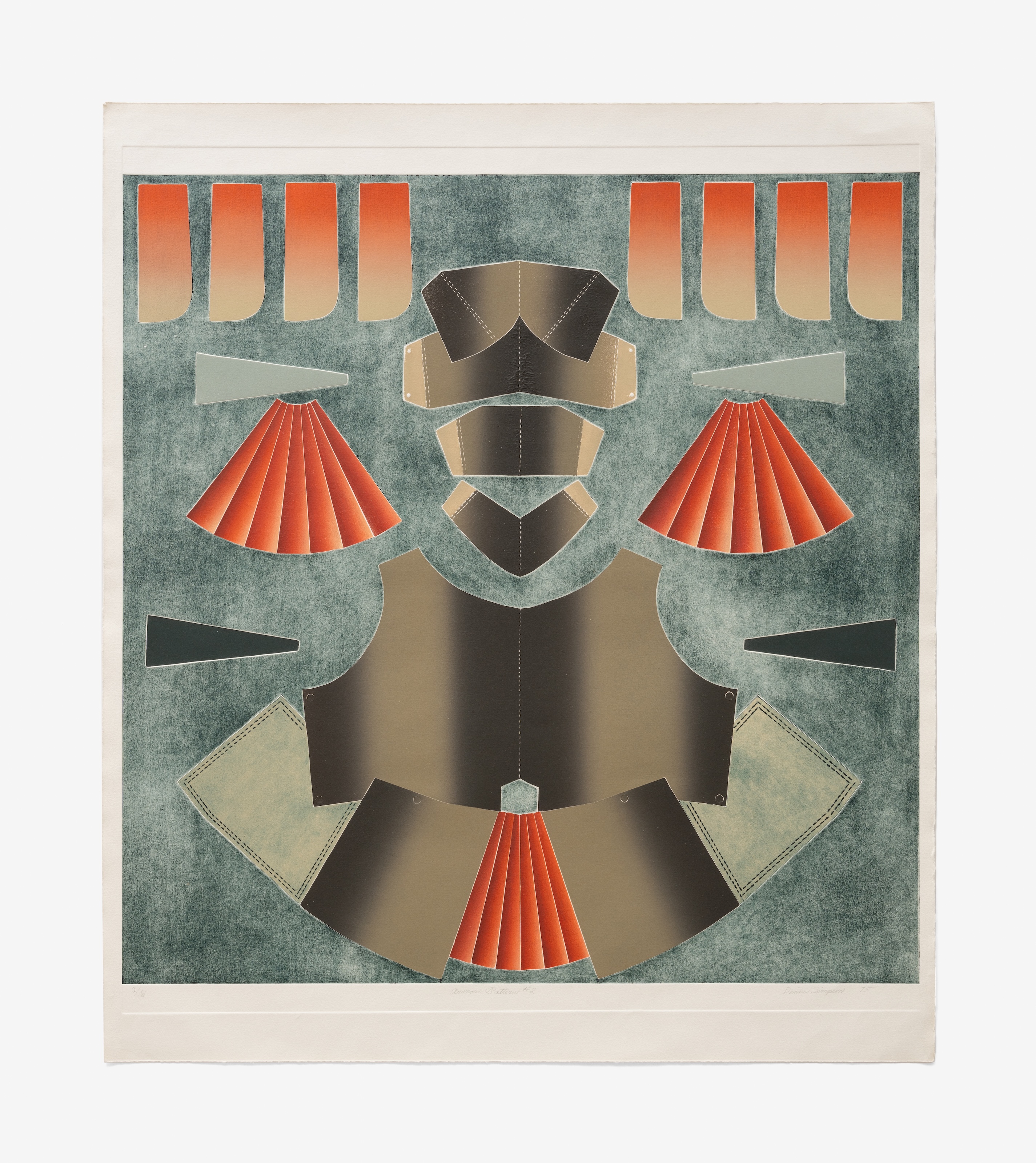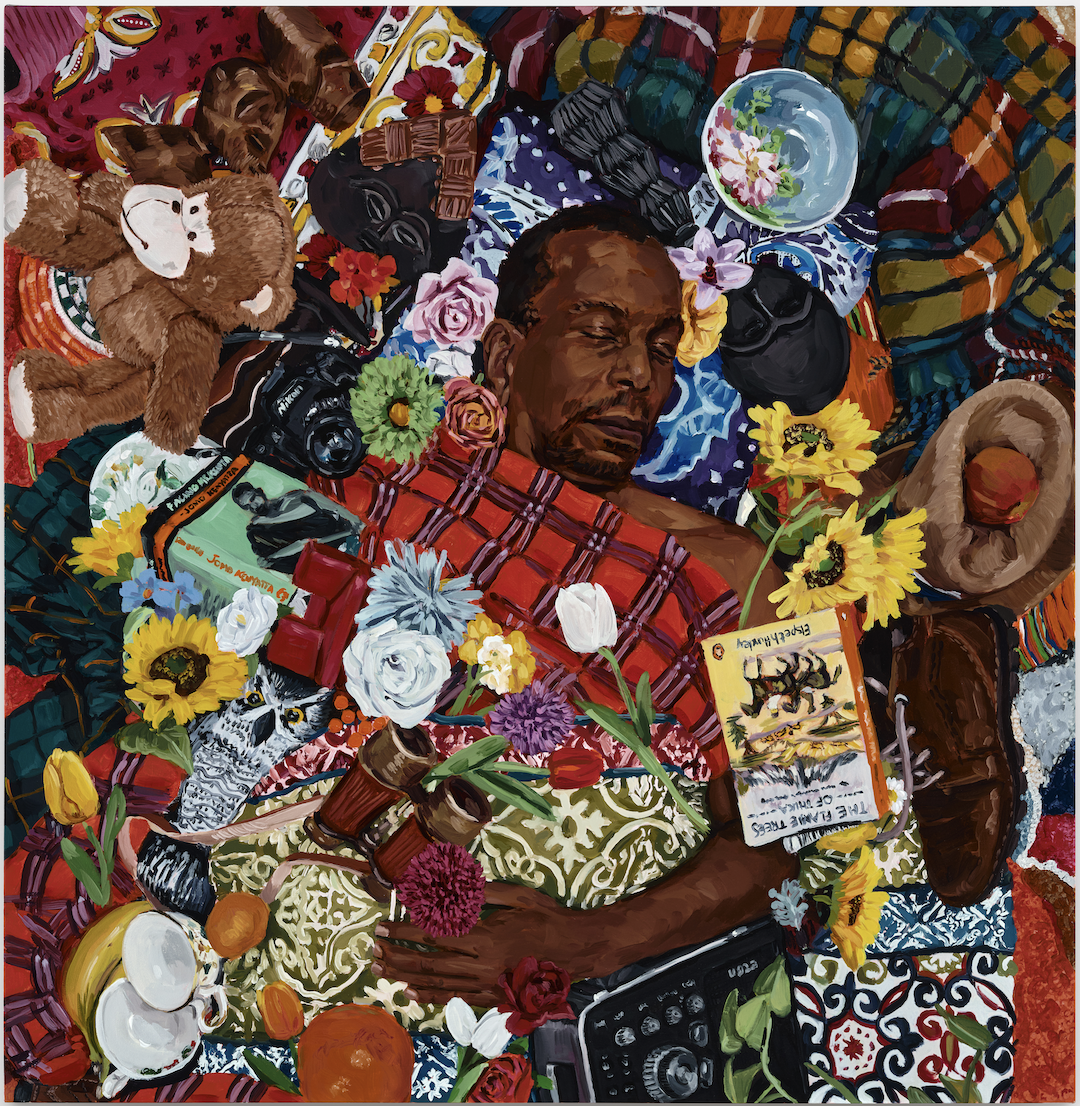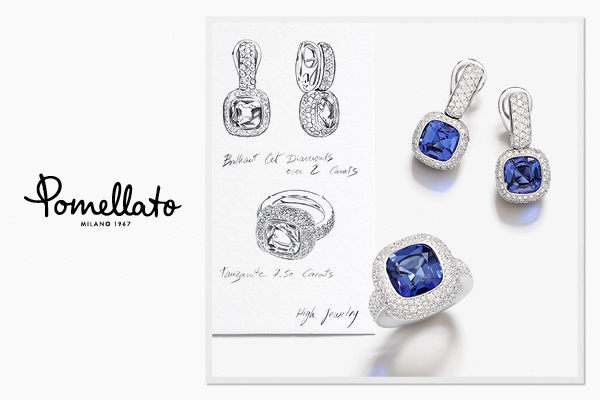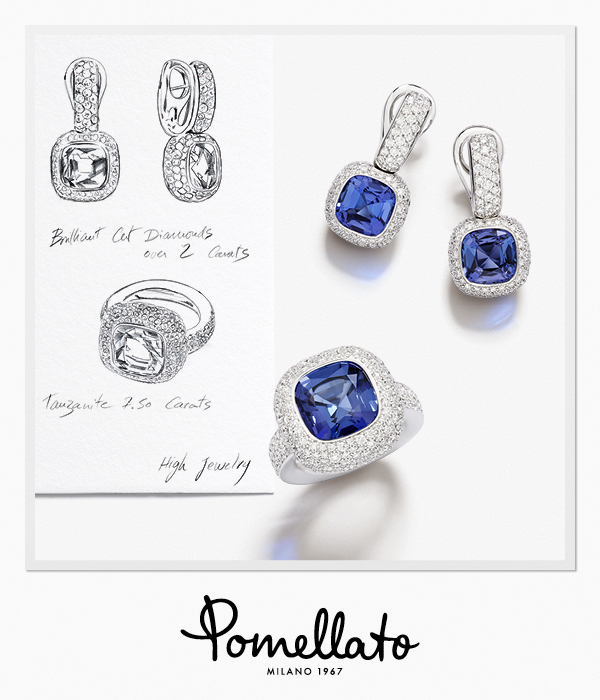Welcome back to Wall Power. I’m Marion Maneker.
We’ve got a
big issue, with Julie Davich checking in from Expo Chicago and visiting Kasmin Gallery in Chelsea. As you get this, I’ll be driving back from Washington, D.C. My colleagues were partying at the White House Correspondents’ Dinner and associated events, but I was visiting the Hirshhorn, National Gallery of Art, and Glenstone. What different lives we lead here at Puck. And that’s a good thing.
Let’s get started…
|
The Dolman poaching strategy: We ran a great interview with Phillips’ executive chairman, Ed Dolman, in the Inner Circle on Wednesday. If you want to truly enter the inner circle of the art world, you should upgrade your subscription here. Ed made some news in his interview: After he leaves Phillips in May, he’ll be joining his son Alex in their new
advisory firm, Dolman & Co. This portion of the conversation has been lightly edited for clarity…
Marion Maneker: At Phillips you were able to attract people from both auction houses. Is there a secret to that?
Ed Dolman: I was really able to exploit some of the challenges the big auction houses had faced in trying to make their businesses more profitable and to deal with a market that’s been challenging for a
while now. A lot of the important business-getters who joined Phillips wanted to rediscover a workplace that put clients and the art first.
The other houses were making attempts to transform the companies into something that they had not been before—that there was a magic bullet that would transform these ancient businesses into some profitable luxury machine. I think all of the people that joined Phillips at that time wanted to get back to representing clients and talking about their art
and how best to sell it. Sotheby’s, at that time, was going through a certain amount of turmoil, which also helped.
Now, I think Phillips is fantastically well positioned for the next uptick in the market. The past 10 years I’ve been at Phillips, the market has behaved in a really quite different way. The market was almost eerily predictable and cyclical up until 2014, with seven-year ebbs and flows of demand for works of art. But from 2014 it remained flat, and was sustained, I
think, on cheap money and more and more sophisticated third-party guarantee arrangements. That made the auctions very tightly and well managed, which prevented any sign of a downturn. It has remained flat for longer than I can ever remember. The little downturn we’ve seen in the market over the past two to three years has lasted a bit longer than we’ve seen before.
I think the market will recover, and at that point Phillips, with the footprint it’s got and its position in the market, is
going to be extremely well positioned to continue to compete at the high end of the auction business and look after its clients extremely well. I shall enjoy watching it, because obviously I will remain close to Phillips. I’m not retiring. I’m just moving out of the auction business. I’m going to be in an advisory perch, teaming up with my son, who’s got quite a successful art advisory business focusing on the Middle East, in particular. We will be watching with great interest to see how things
develop over the next few years.
|
|
|
A MESSAGE FROM OUR SPONSOR
|
At the intersection of artistry and innovation lies Nudo, Pomellato’s most iconic creation. Each
Nudo piece is a miniature masterpiece, where design creativity, expert craftsmanship, and gemstone mastery meet. The Nudo High Jewelry collection embodies Pomellato’s unique vision of precious jewelry, combining the collection’s signature lightness and wearability with new levels of creativity and craftsmanship.
LEARN MORE
|
|
|
- Gagosian gets transparent for Paul McCartney: In the pivotal months between December 1963 and February 1964, when the Beatles appeared on The Ed Sullivan Show, Paul McCartney started carrying a Pentax 35mm camera and taking pictures. The negatives from this period only recently surfaced after 60 years. Working with the same studio that produces the images for Nan Goldin and Cindy Sherman, McCartney has created an edition of
36 photographs that are now on view at Gagosian Beverly Hills. Slightly breaking with the gallery’s past practice, Gagosian is providing pricing to anyone who walks into the gallery who asks or uses the handy QR code. I’m looking at a copy now. The cheapest print is $15,000, and the most expensive is $80,000, but most are around $35,000 to
$50,000.
McCartney’s images have appeal to collectors beyond Beatlemaniacs or even regular fans. Gagosian is also feeding an interest in photography from its collector base and new collectors, having seen strong demand for their Avedon 100 show two years ago before their Tyler Mitchell show earlier this year sold out. At the Friday opening, the gallery had already made $300,000 worth of sales to new clients.
|
|
|

|
Julie Brener Davich
|
|
Getting ‘Bouncier’ at Kasmin
|
Installation view, vanessa german at Kasmin, New York. Photo: Courtesy of
Kasmin
|
2018 was a big year for self-taught artist and performance poet vanessa
german (she prefers all lowercase). She had been garnering attention for her community arts activism in Pittsburgh and ritualistic tribal figures made from antique bric-a-brac, beads, and the like, when the Crystal Bridges
Museum of American Art awarded her the $200,000 Don Tyson Prize. That was also the year Yvonne Force Villareal included her in the summer group show Seed at Kasmin Gallery, along with 28 other female artists, including Cecily Brown and Wangechi Mutu.
Since then, german has won more awards, shown in national museums, and moved from Pittsburgh to Asheville, North Carolina. In 2021, one of her sculptures was auctioned at Phillips
for $45,360 against an estimate of $12,000. Kasmin now represents german, and her second solo exhibition at the gallery is currently on view. The sculptures, all created in the months after Hurricane Helene ravaged her community, embody resilience and strength. Speaking to the speed of german’s output, Kasmin executive director Mariska Nietzman described her process to me as an “intuitive marathon.”
Inspired by Olmec stone heads in ancient Mexico, with their full lips and
flat noses, german created a series of nine monumental heads that fill Kasmin’s main gallery space on West 27th Street, priced at $60,000 to $120,000 each. The works are at once grounded, because of their size and presence, and also spiritual, because of their adornments. Crystals and semiprecious beads form patterns like evil eyes, snakes, tears, skulls, and hands (à la Betye Saar). German also uses textiles in the form of prayer bundles and found quilts, an homage to
her late mother, a fabric artist.
Strutting across Kasmin’s smaller 28th Street space is a series of eight 3-foot-high dancing figures ($32,000 to $36,000), reminiscent of Congolese power figures, or Nkisi. Also formed from beads and bric-a-brac, each figure is in the throes of a vogue move known as a “dip,” common in queer subculture in the 1970s and among drag performers
now. German explains on Instagram that the dance move represents the “resilience of a being who is always under attack to say, Not only am I not silenced, I’m bouncier.” She has talked a lot about the healing power of art in general, and her art in particular. If you could use some of that, go check out the show before it closes on May 10.
|
|
|
Expo Chicago features lower prices compared to other Frieze-branded
fairs, but it functions as a catalyst and convener for the local arts community.
|
|
|
On the opening day of Expo Chicago, this past Thursday, dealers reported sales but
also lots of holds, with collectors wanting to take their time with purchases. This is not unique to Chicago or art fairs, as many buyers are taking a wait-and-see stance until they have a better sense of where the broader economy’s headed under the mercurial Trump administration.
Mega-collectors Marty Nesbitt and Anita Blanchard were on hand to show support for the Chicago arts community, though the prices at the fair tended to be on the
lower side compared to other Frieze-branded events. One local collector told me that most of the city’s collectors are what he would call the “working rich,” who can spend a maximum of $50,000 on a work of art. An interior designer told me she was looking for works for clients in the $10,000 to $30,000 range. There was even a Books & Editions section in which works could be had for just a few hundred dollars each.
|
|
|
A MESSAGE FROM OUR SPONSOR
|
At the intersection of artistry and innovation lies Nudo, Pomellato’s most iconic creation. Each
Nudo piece is a miniature masterpiece, where design creativity, expert craftsmanship, and gemstone mastery meet. The Nudo High Jewelry collection embodies Pomellato’s unique vision of precious jewelry, combining the collection’s signature lightness and wearability with new levels of creativity and craftsmanship.
LEARN MORE
|
|
|
This year’s fair is the second edition under the ownership of Frieze, the global art
fair brand, itself a subsidiary of Ari Emanuel’s Endeavor Group. (“It looks like they purchased it and forgot about it,” one New York art advisor said to me.) But Expo is primarily a celebration of local galleries and artists. The fair coincided with the closing of local legend Rhona Hoffman’s brick-and-mortar gallery, a stalwart in the Chicago art scene for almost five decades. Her booth was a roundup of artists and estates from her stable, including
Derrick Adams, Sol LeWitt, Gordon Parks, Nancy Spero, and Martha Tuttle. She’s not retiring entirely, and plans to do projects and pop-ups and keep up with her artists.
Another influential local dealer, Monique Meloche, wearing oversize gold hoop earrings with “Monique” scrawled across them, is celebrating the 25th anniversary of her namesake gallery. She proudly pointed out the three
major New York museum openings in the last month for Candida Alvarez, Rashid Johnson, and Amy Sherald, who all got their start with her in Chicago. (Johnson reportedly lived in her basement for a time.) At her Expo booth, she showed works by Alvarez, Sanford Biggers, Brendan Fernandes, and 2024 MacArthur fellow Ebony G. Patterson, among others.
|
|
|
Diane Simpson, Armour Pattern #2 (1975). Photo: Courtesy of Corbett
vs. Dempsey
|
In the fair’s Profile section of solo artist booths, Corbett vs. Dempsey presented early
1970s prints ($15,000 to $18,000) and mixed-media works ($12,000 to $30,000) by Diane Simpson. She earned both her B.F.A. and M.F.A. at the School of the Art Institute of Chicago and now lives in Wilmette, just north of the city. She’s known for her sculptures made from fiberboard, cardboard, and metal that borrow forms from deconstructed clothing and architecture.
|
Wangari Mathenge, Re-Membering II (Facing Mt. Kenya) (2025). Photo:
Brian Griffin/Courtesy of the Pippy Houldsworth Gallery, London
|
Some galleries coming to the fair from outside Illinois tapped into the hometown
collector base by showing local artists. St. Louis–based dealer William Shearburn, who has been participating in Expo on and off for 25 years, brought a large work on paper by Kerry James Marshall. London-based gallery Pippy Houldsworth brought five large oil portraits by Kenya-born SAIC graduate Wangari Mathenge. Her figures lie among the cultural artifacts of Mathenge’s research into colonialism: books, traditional African dolls, fabrics,
masks, etcetera. On the fair’s first day, the gallery sold two of her paintings to private collectors for $90,000 and $100,000, and are holding another two for institutions. Many curators from regional museums attend the fair because of the free Curatorial Forum that runs alongside it, organized by Expo and Independent Curators International.
Expo is perhaps best known not for the fair itself, but as a catalyst and convener for the local arts community. The constellation of events
included the Renaissance Society’s annual “RenBen” benefit on Wednesday night and a Bottega Veneta–sponsored dinner at Theaster Gates’s Rebuild Foundation on Thursday night. The membership network EarlyWork, founded by Pritzker heir Abby Pucker to get younger Chicagoans involved in the arts, threw an opening night reception at Secrist | Beach gallery.
|
|
|
The gallery exhibition generating the most buzz was Anthony Gallery’s group show
Resonance, curated by Lauren Halsey. She brought together works by 30 artists, including a hyperrealistic Sayre Gomez painting of the L.A. skyline with an illuminated shopping center pylon. “She wanted to be in a space with friends, amid community,” said gallery founder Isimeme “Easy” Otabor. Halsey herself made two marble wall panels in her signature style that combines Egyptian iconography with that of South Central L.A. The show is
already sold out (except for the works by Theaster Gates, Mickalene Thomas, and Jordan Casteel, which were not for sale). Two other gallery shows that had people chittering were Robell Awake’s carved ladderback chairs at Volume Gallery and Caroline Kent’s assemblages of carved wood and linen painted with colorful geometric abstractions at Patron Gallery. And over at the Peninsula Hotel through June are about 45 works by both
global and local artists from the Bill and Christy Gautreaux collection.
Some say the best part of Expo Week is the Barely Fair, co-founded by Roland Miller and Kate Sierzputowski in 2019 to promote lesser-known and emerging dealers. The fair’s miniature booths are dioramas executed at 1:12 scale, complete with miniature artworks for
sale. Among the 30 participating galleries were Chicago locals Ivory Gate and Western Exhibitions, and New York–based dealers 56 Henry and Good Naked. Pieces were available for prices ranging from a few hundred dollars to mid-four figures, by artists like Lauren Seiden and Ohad Meromi.
|
Thanks, Julie.
I should let you go, but I can’t resist a rant:
The New
York Times is at it again. In what appears to be a publicity pitch gone horribly wrong, the Times is trying to anoint this moment “Hauser spring,” because Hauser & Wirth has so many artists—Rashid Johnson, Amy Sherald, Jack Whitten, and Lorna Simpson—with shows at
major museums. The Times being the Times, this is spun up into a confection of innuendo about how the so-called “mega-gallery” has a conflict of interest in supporting these shows. The Times can never pin down what the support actually means, but the story wants you to believe it’s something more than helping curators contact collectors and underwriting some of the very expensive shipping costs. That’s real support, but hardly the “unlimited finance” one reader alluded
to in a text after sending me the story this morning.
The Times tries to bolster its case with some dark-sounding statistics: “A New York Times analysis of solo exhibitions since 2019 shows that out of 350 exhibitions by contemporary artists, nearly 25 percent went to artists represented by just 11 of the biggest galleries in the world.” Wow.
It gets worse: “The Times found that more than half of all solo exhibitions of contemporary artists since 2019 at
the Morgan Library & Museum, and 40 percent of similar shows at the Guggenheim Museum, featured artists represented by the largest galleries. At the Met the figure was almost one-third, at MoMA almost one-quarter, and at the Whitney about one-fifth.”
The writers never really make clear what they and the Times believe should be the appropriate relationship between galleries and museums. The story—and the newsletter the Times sent this morning—indulges in some ahistorical
assertions that curators, museums, and galleries used to keep their distance from one another. This simply isn’t true—in fact, the art world was once far more incestuous than it is even today. Now that the art world is much bigger than it once was, there’s a strong case to be made that museums, collectors, and galleries are far less up in each other’s business than before. That doesn’t mean these circles don’t overlap heavily, but the greater numbers have led to a greater complexity of
relationships.
The Times goes on to note that “contemporary artists without gallery representation made up 20 percent of all solo exhibitions at top New York museums since 2019.” So first we were told a quarter of shows featured artists from the top 11 galleries. Now we learn a fifth of the shows focus on artists who are unaffiliated. That’s 25 percent for the big guys against 20 percent for the nobodies. That’s a triumph. (If it isn’t, the Times doesn’t give us any
statistical argument for why the numbers they present up top are better or worse than this last stat they’ve buried.)
Come at it from another direction, and the stats tell you that the majority of solo shows, 55 percent, feature artists represented by established but not massive galleries. Presumably, these are the good guys—and they’re winning. Here’s another take: 75 percent of all solo museum shows involve artists not represented by the top 11 galleries. Doesn’t sound
so bad when you put it that way, does it?
Curators seem to be doing a great job of homing in on artists of merit that the market has overlooked. That a quarter of the shows come from established galleries may be easily explained by selection bias. They’re good artists. Museums want to show them; collectors want to buy them; good galleries want to represent them. Two cheers for Hauser & Wirth.
Rant over. Let’s check in again on Tuesday.
M
|
|
|
The ultimate fashion industry bible, offering incisive reportage on all aspects of the business and its biggest
players. Anchored by preeminent fashion journalist Lauren Sherman, Line Sheet also features veteran reporter Rachel Strugatz, who delivers unparalleled intel on what’s happening in the beauty industry, and Sarah Shapiro, a longtime retail strategist who writes about e-commerce, brick-and-mortar, D.T.C., and more.
|
|
|
Need help? Review our FAQ page or contact us for assistance. For brand partnerships, email ads@puck.news.
You received this email because you signed up to receive emails from Puck, or as part of your Puck account associated with . To stop receiving this newsletter and/or manage all your email preferences, click here.
|
Puck is published by Heat Media LLC. 107 Greenwich St, New York, NY 10006
|
|
|
|
